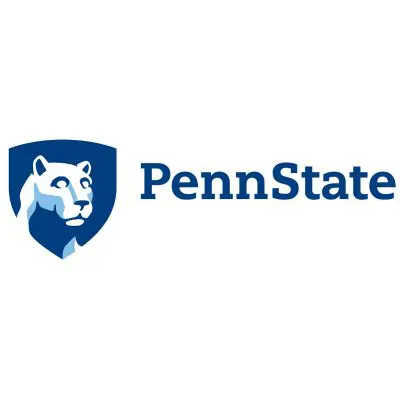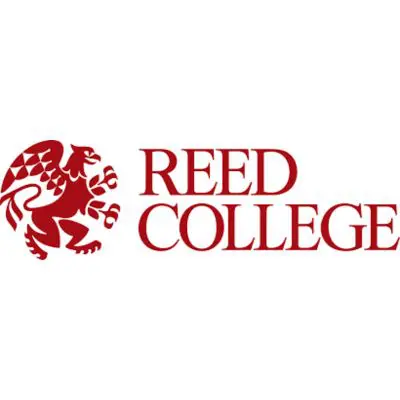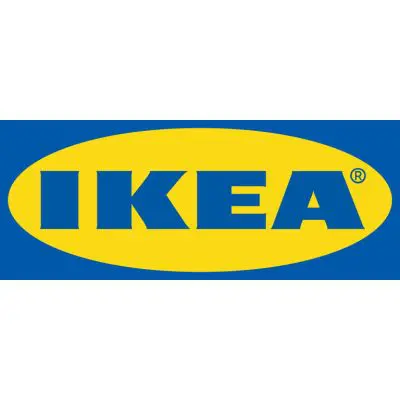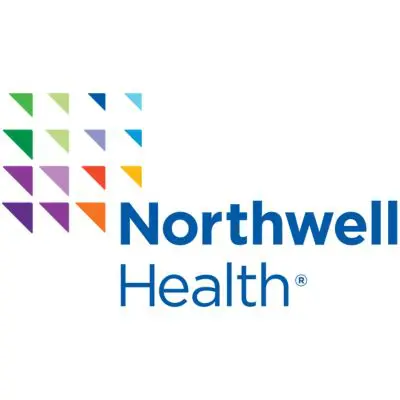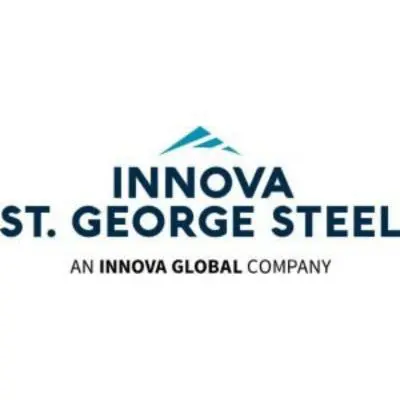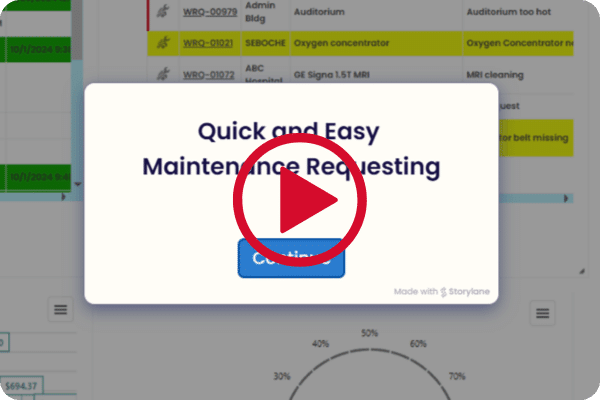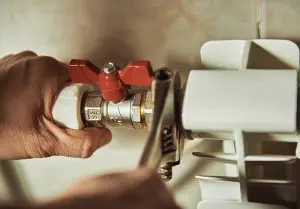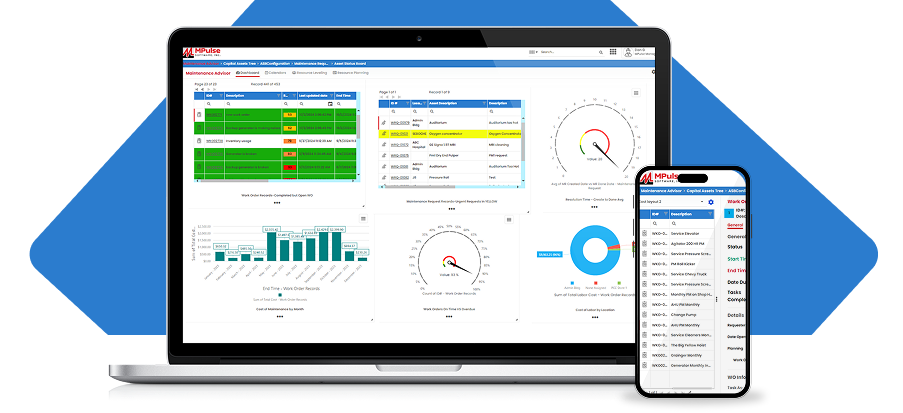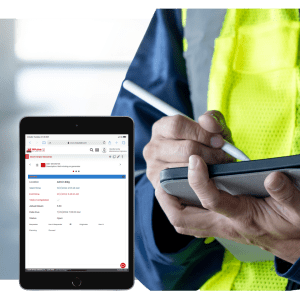
Building Maintenance
Explore how CMMS software can revolutionize your building maintenance operations. From streamlining work order management to optimizing asset performance, MPulse Software empowers your team to proactively address maintenance needs, reducing downtime and increasing efficiency. Discover how CMMS software helps you cut costs, boost reliability, and take control of your maintenance strategy.
Table of Contents
What is a Building Maintenance?
Building maintenance encompasses the routine tasks and proactive measures teams take to ensure facilities remain safe, functional, and comfortable. This includes both preventive and corrective actions designed to maintain the building’s structure, systems, and overall condition. The ultimate goal is to provide a secure and pleasant environment for tenants by addressing needs like cleaning, landscaping, and maintaining electrical and mechanical systems.
Put simply, building maintenance is about caring for a facility to keep it operating smoothly, safely, and comfortably through regular upkeep and timely repairs.
But it’s not just tenants who benefit—building owners also reap rewards. Proper maintenance extends the lifespan of building assets, reduces costly repairs, and boosts property resale value. Depending on the property, maintenance might require a versatile “Jack or Jill of all trades” or a team of specialists with technical expertise to handle the variety of tasks involved.
Examples of Building Maintenance Tasks
What does a typical day for a maintenance professional look like? Their responsibilities often vary widely but can include tasks such as:
Landscaping: Mowing lawns, trimming shrubs, and maintaining outdoor areas
Lighting Inspections: Checking outdoor lighting for damage or malfunctions
Drainage Maintenance: Clearing gutters and ensuring proper water flow
Outdoor Cleaning: Keeping entryways, walkways, and common areas tidy
Surface Repairs: Sealing cracks in parking lots or driveways
Seasonal Inspections: Checking for water damage on ceilings and floors during winter
HVAC Maintenance: Replacing air filters and performing system tune-ups
Fire Safety: Servicing fire alarms and suppression systems
Security System Checks: Inspecting door and window alarms to ensure they function properly
Emergency Repairs: Addressing unexpected issues with critical building assets
Through these efforts, building maintenance teams help create a well-maintained, reliable, and inviting environment for everyone who uses the space.
Categories of Building Maintenance
Building maintenance tasks can vary widely, but they generally fall into two primary categories: Preventive Maintenance and Corrective Maintenance. Understanding these categories is key to ensuring a facility remains safe, functional, and well-maintained.
Preventive Maintenance
Preventive maintenance (PM) focuses on proactive measures to prevent building damage and maintain structural integrity. These routine tasks aim to protect the building from wear and tear, preserve its functionality, and enhance its longevity. Effective PM can also include sustainable strategies incorporated during the building’s design and construction to withstand natural disasters like storms or floods.
Examples of preventive maintenance tasks include:
Inspecting roofs for leaks or damage
Clearing drains and gutters to prevent blockages
Washing floors and maintaining cleanliness
Garbage removal and waste management
Conducting regular inspections of utility systems like HVAC, plumbing, and electrical systems
By addressing potential issues before they escalate, preventive maintenance minimizes costly repairs and helps maintain the overall quality of the building.
Corrective Maintenance
Corrective maintenance involves reactive measures to restore a building’s functionality and comfort after unexpected damage or system failures. While preventive maintenance can reduce the frequency of issues, it’s impossible to eliminate them entirely. Having a corrective maintenance strategy ensures quick response and resolution when problems arise.
Examples of corrective maintenance tasks include:
Replacing broken windows or damaged fixtures
Repairing disconnected or faulty electrical systems
Performing emergency plumbing repairs to address leaks or blockages
Corrective maintenance focuses on restoring normal operations as quickly as possible, ensuring minimal disruption for tenants and building users.
By balancing preventive and corrective maintenance, building managers can ensure their facilities remain in excellent condition, safeguarding both structural integrity and occupant satisfaction.
The Importance and Challenges of Building Maintenance
Building maintenance is essential for preserving the safety, functionality, and value of properties, but it comes with its own set of challenges. Maintenance teams, including managers and technicians, often face obstacles that can affect efficiency and cost-effectiveness if not properly addressed.
Challenges in Building Maintenance
Overseeing Complex Systems and Locations
Maintenance managers must monitor multiple building systems, such as HVAC, electrical, plumbing, and security, often spread across different locations. Coordinating these tasks can be overwhelming without effective tools.Access to Critical Information
Maintenance technicians need immediate, mobile access to essential data like maintenance histories, work orders, and standard operating procedures (SOPs). Without centralized systems, delays and inefficiencies are inevitable.Reliance on Manual Processes
Managing maintenance schedules, work histories, and asset information manually creates inefficiencies. Paper-based systems lead to scattered data, duplicate efforts, and difficulties in tracking trends or identifying problem areas.Pressure to Control Costs
For property owners and tenants, the priority is completing maintenance tasks efficiently while keeping costs in check. Inefficient workflows or reactive maintenance can inflate expenses unnecessarily.
The Role of Technology in Building Maintenance
Adopting digital tools can address many of these challenges. A Computerized Maintenance Management System (CMMS) is a powerful solution that streamlines building maintenance processes by centralizing all essential data and automating workflows.
With a CMMS, building maintenance professionals can:
Easily Manage Multiple Systems and Locations: Track all building systems from one platform.
Access Information On-the-Go: Technicians can use mobile devices to view SOPs, work orders, and asset histories in real time.
Identify Trends and Increase Efficiency: Use data insights to optimize maintenance schedules and prevent recurring issues.
The Importance of Proactive Maintenance
Adding a CMMS to your toolkit enables a shift from reactive to proactive maintenance. By anticipating and addressing issues before they escalate, you can:
Reduce unexpected asset failures
Minimize downtime for tenants
Lower overall maintenance costs
Extend the lifespan of building systems
By overcoming these challenges with technology, maintenance teams can deliver more efficient, cost-effective building maintenance while ensuring a safe and comfortable environment for tenants.
Optimizing Maintenance Management for Long-Term Success
As operational costs rise and experienced technicians retire, the landscape of building maintenance is evolving. Many organizations are seeking effective strategies to enhance their maintenance management and position themselves for long-term success. Here are some key ways to improve your building maintenance processes and better equip your team to handle future challenges.
1. Implement a Preventive Maintenance Program
One of the most impactful steps to improve building maintenance is to shift from reactive to proactive maintenance through a preventive maintenance program. Proactive maintenance allows you to address potential issues before they escalate, helping you avoid costly asset failures and unexpected breakdowns.
A preventive maintenance strategy ensures your building systems remain in optimal condition by scheduling regular inspections, tune-ups, and repairs. This approach not only enhances the reliability of your facilities but also extends the lifespan of your assets.
2. Use Digital Work Order Software
Effective preventive maintenance relies on consistent, well-organized processes. Digital work order software simplifies maintenance management by centralizing task assignments, schedules, and standard operating procedures (SOPs).
For example, platforms like MPulse Software streamline:
Preventive maintenance scheduling based on calendar timelines or workload insights
Creation of digital SOPs and checklists using customizable templates
Real-time updates for emergency or reactive maintenance tasks
With a centralized system, your team can stay organized and execute building maintenance tasks with greater efficiency and accuracy.
3. Optimize Inventory Management
Maintenance teams can only perform their tasks effectively if they have the right tools and supplies readily available. Optimizing your inventory management is crucial to ensure you never run out of essential parts or equipment.
Modern software solutions, such as MPulse Software, help you:
Set automated low-stock alerts for critical items
Generate purchase orders automatically
Manage vendor information in a centralized system
By streamlining inventory management, you minimize delays caused by missing parts and ensure maintenance tasks can be completed on schedule.
4. Analyze and Report on Maintenance Activities
Successful building maintenance isn’t just about execution—it’s also about continuous improvement. Analyzing and reporting on your maintenance activities provides valuable insights into your team’s performance and highlights areas for optimization.
Reporting tools like MPulse Software enable you to:
Track key metrics and performance indicators
Generate custom dashboards for at-a-glance insights
Make data-driven decisions to improve processes
By monitoring trends and adjusting your strategies accordingly, you can refine your building maintenance operations to achieve greater efficiency and operational excellence.
Building Maintenance Across Various Sectors
Building maintenance is a critical function that spans nearly every industry. Regardless of the type of business, as long as operations take place in a physical building, leaders must be prepared to address maintenance needs. Proper building maintenance ensures safety, functionality, and comfort for employees, customers, and stakeholders. Here are some key industries where building maintenance plays a vital role:
Manufacturing
Factories and plants depend on well-maintained buildings to support operations, protect equipment, and meet safety regulations. Regular maintenance of the facility and the assets it houses is essential to minimize downtime and ensure compliance.
Housing
Residential buildings require ongoing maintenance for both indoor and outdoor areas. Landlords and housing companies must schedule inspections, repairs, and upkeep to keep properties in good condition and ensure tenant satisfaction.
Retail
Retail businesses, shopping malls, and stores must prioritize building maintenance to handle high foot traffic while maintaining a clean, attractive, and functional environment.
Food Services
Restaurants, cafes, and fast-food establishments face unique challenges in building maintenance. In addition to maintaining cleanliness and handling high customer traffic, they must address food safety regulations and keep complex systems, such as refrigeration and ventilation, in top condition.
Education
From preschools to universities, educational institutions rely on building maintenance to provide safe, comfortable, and functional learning environments. Well-maintained facilities support both students and teachers in achieving their goals.
Healthcare
Hospitals, clinics, emergency rooms, and specialist offices need reliable, well-maintained buildings to ensure the comfort and safety of their patients. Building maintenance in healthcare settings often involves complex systems, such as HVAC, plumbing, and medical equipment, which require specialized attention.
Industrial Facilities
Warehouses, processing plants, and other industrial facilities require a dual focus on maintaining the building structure and the critical assets housed within. Regular maintenance ensures smooth operations and adherence to safety standards.
By prioritizing building maintenance, organizations can create safe, functional, and efficient spaces that meet the needs of their operations, employees, and customers. A proactive approach to maintenance not only ensures regulatory compliance but also minimizes costs, enhances operational efficiency, and extends the lifespan of facilities and equipment.
Building Maintenance and CMMS
Now that you’re familar the benefits of a CMMS, the next step is determining whether it’s the right solution for your business. While maintenance management systems were once limited to manufacturing plants, their use has now extended across various industries, including oil, gas, mining, energy, food and beverage, pharmaceuticals, chemicals, and agriculture, to name just a few.
To evaluate whether your maintenance team could benefit from a CMMS, consider these questions:
Do you manage a lot of equipment? A CMMS helps you maintain high-value assets and manage all the data from your equipment. It also assists in organizing and streamlining a large storeroom.
Do you produce a lot of goods? A CMMS is ideal for aligning maintenance with production schedules, even when they frequently change. It helps eliminate conflicts between maintenance and production teams, allowing both to focus on combating downtime, poor quality, and safety risks.
Do you aim to improve reliability? If your organization is striving for operational excellence and meeting KPI targets, a CMMS can support that goal. It enables you to move away from reactive maintenance, follow established processes, and transform inaccurate data into reliable information, ensuring smooth operations.
Creating a Building Maintenance Schedule
When implementing preventive measures, start by developing a preventive maintenance program, which begins with establishing a proactive building maintenance schedule. Managing tasks, schedules, and processes can feel overwhelming, but the right CMMS software can make a significant difference. Choose building maintenance software that integrates seamlessly with your preventive maintenance schedule.
MPulse Means Happy Customers
